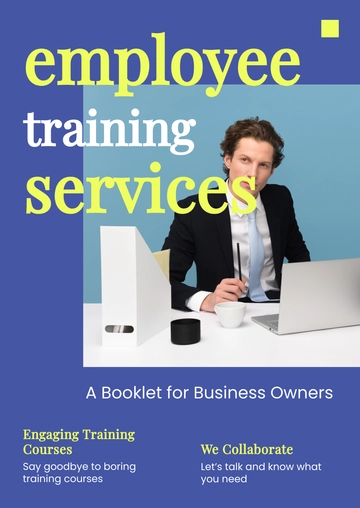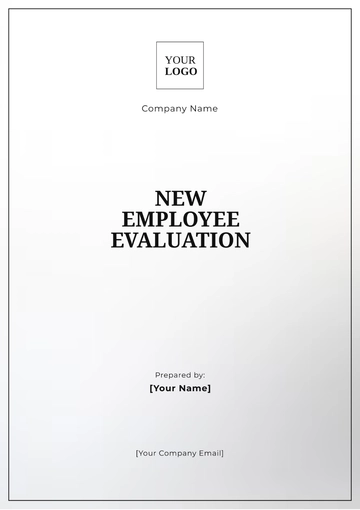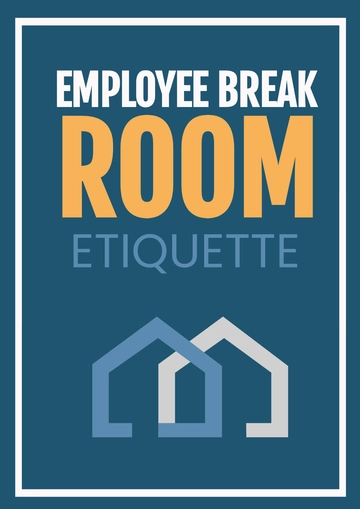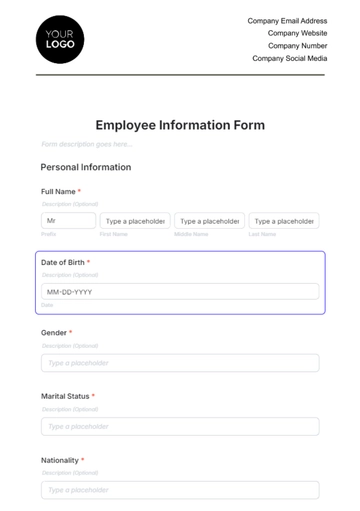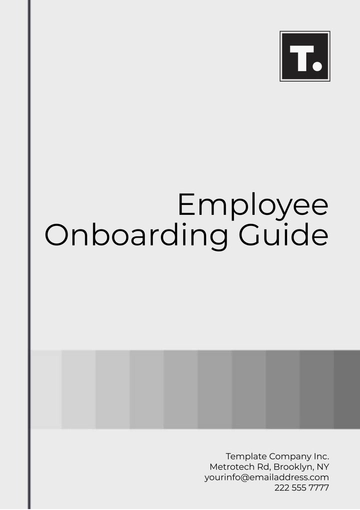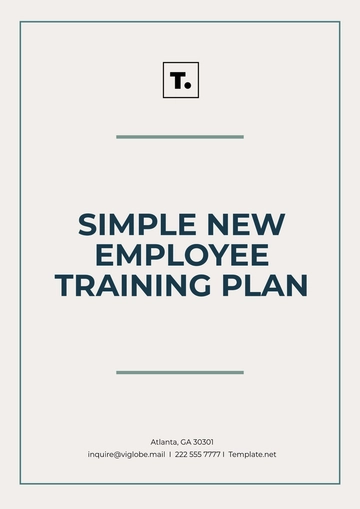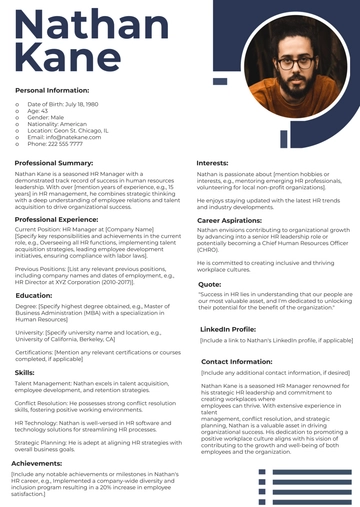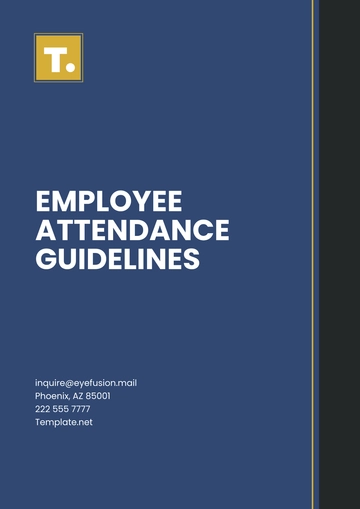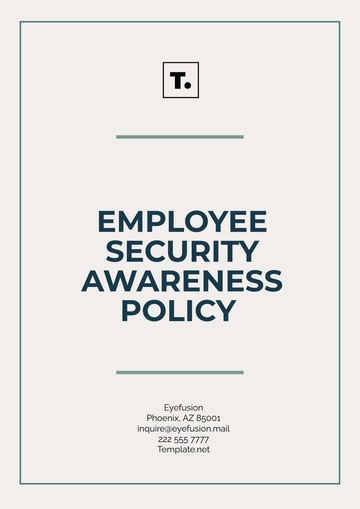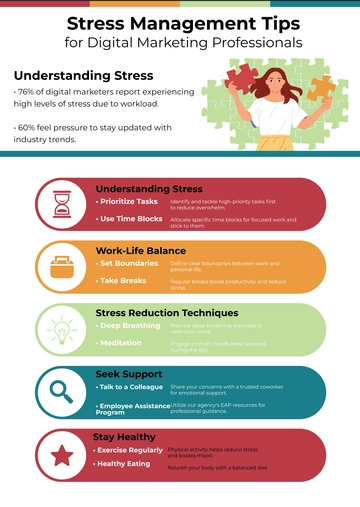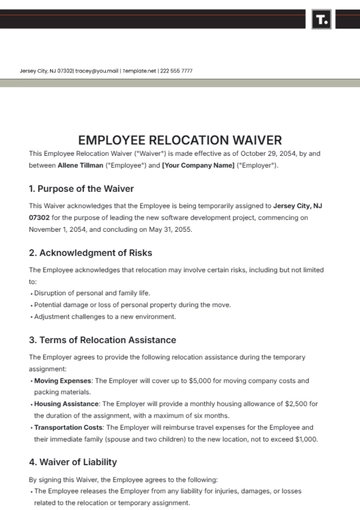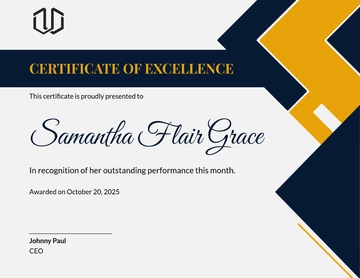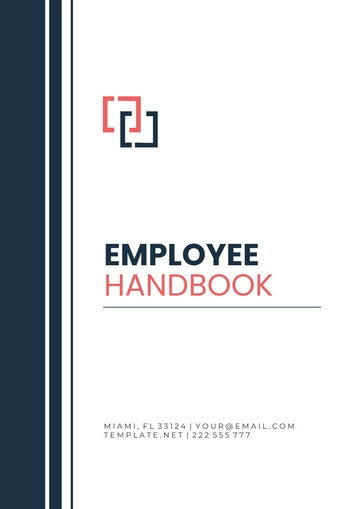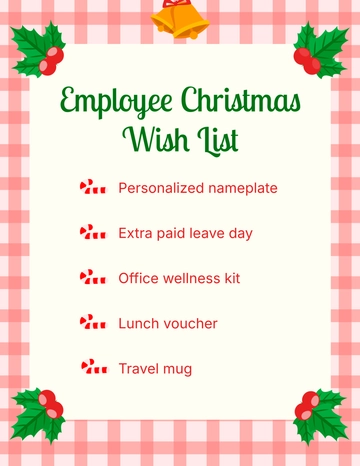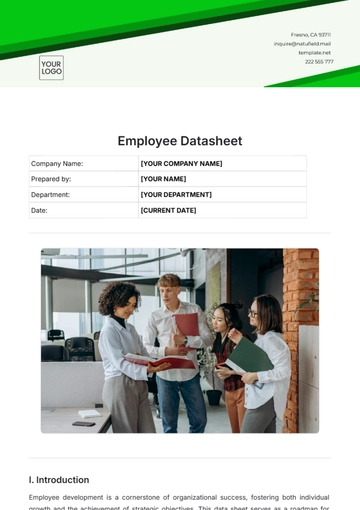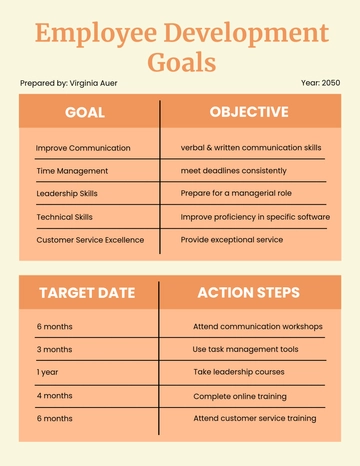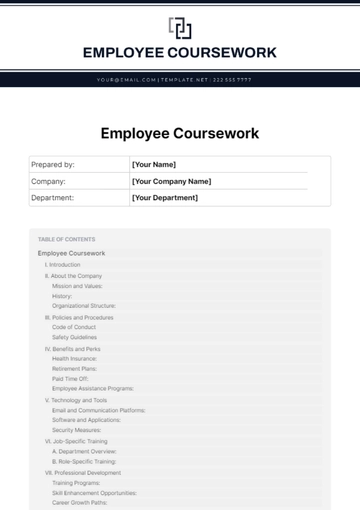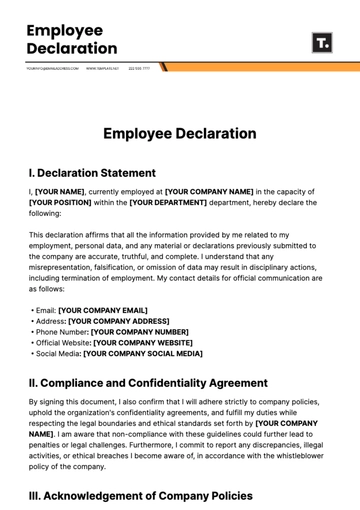Free Printable Grocery Store Employee Training Guideline

I. Introduction
A. Purpose of the Training
Welcome to [Your Company Name]! This training guide is designed to equip you with the knowledge and skills necessary to perform your duties effectively, ensuring you contribute to a smooth and efficient store operation. Understanding these guidelines will help you provide exceptional customer service and maintain high standards of store management.
B. Importance of Adhering to Store Policies
It is of utmost importance to adhere to store policies in order to uphold a professional and well-organized work environment. By meticulously following these established guidelines, you play a significant role in fostering the overall success of the store. Your commitment to these rules ensures that we consistently deliver a high-quality experience to our customers, maintaining their trust and satisfaction.
C. Overview of Training Structure
This comprehensive training guide has been meticulously organized to encompass every facet of your role, ranging from the intricacies of daily operations to the nuances of effective customer service and the critical adherence to safety protocols. Within each segment of this guide, you will find extensive and detailed information designed to enhance your understanding of your job responsibilities. The ultimate goal is to equip you with the knowledge and skills necessary to perform your duties with excellence and confidence in your position.
II. Store Operations
A. Store Layout and Departments
Store Zones
The store is divided into key zones, such as Produce, Dairy, and Checkout, each serving a specific function to streamline shopping. Familiarizing yourself with these zones will help you assist customers more effectively and manage store operations efficiently.
Key Locations
Important locations include the Break Room, where you can take breaks and access personal items, and the Manager’s Office, where administrative tasks are handled. Knowing these locations will help you navigate the store and perform your duties smoothly.
B. Operational Procedures
Opening Procedures
Begin your shift by unlocking the store, turning on all necessary equipment, and ensuring that the store is clean and presentable for customers. Check the cash registers to make sure they are stocked with the correct change and that all systems are operational.
Closing Procedures
At the end of your shift, count the cash in each register, prepare cash reports, and secure the money in the store's safe. Ensure that all lights are turned off, doors are locked, and the security system is activated to protect the store.
C. Inventory Management
Stocking Procedures
Please make sure to restock the shelves promptly so that products are always readily available for customers whenever they need them. Additionally, take the time to arrange the items neatly, following the store's prescribed layout plan. This will help maintain an organized and visually appealing presentation that enhances the shopping experience for our customers.
Inventory Checks and Reordering
Conduct thorough and periodic inventory inspections to keep track of stock levels and to detect any inconsistencies or discrepancies within the inventory. Based on the data gathered from these inventory assessments, generate and submit requisitions for restocking. This proactive approach is essential to maintaining adequate supplies of popular items, ensuring they are consistently available for customer purchase.
Handling Stock Discrepancies
Conduct a thorough examination to identify any discrepancies that might exist between the physical stock and the inventory records. This process should involve meticulously reviewing all recent transactions and the movements of stock. After identifying any differences, it is essential to communicate these discrepancies to the store manager promptly. Subsequently, update the inventory records to ensure that they accurately reflect the current stock levels.
III. Customer Service
A. Communication Skills
Greeting Customers
As customers walk through the entrance of the store, make it a point to offer a warm and sincere greeting. Use language that is friendly and welcoming, ensuring that your tone conveys a positive and inviting attitude. Make them feel valued with eye contact and a smile, and proactively offer help to ensure an enjoyable, stress-free shopping experience.
Listening and Responding to Inquiries
Make sure to carefully listen to and carefully consider any questions that customers may have, and then respond with answers that are both clear and to the point. It is crucial to thoroughly comprehend their specific needs and, in doing so, to provide effective and supportive solutions. This attentive approach will significantly contribute to improving and enriching their shopping experience.
B. Handling Customer Complaints
Problem-Solving Techniques
When addressing complaints, it is essential to approach the situation with a high degree of empathy and professionalism. Start by genuinely seeking to understand the customer's issue, listening carefully to their concerns and asking any necessary clarifying questions. Offer practical solutions by considering the customer's perspective and providing effective resolutions. Stay calm and focused, ensuring the customer feels heard, valued, and confident their concerns are a priority.
Escalation Procedures
In the event that a complaint arises and you find yourself unable to resolve it at your current level of authority, you should take the necessary steps to escalate the matter to a store manager or supervisor. Provide all relevant details of the complaint to higher management, including the issue, your actions taken, and any observations, to ensure a quick and effective resolution.
C. Enhancing the Shopping Experience
Store Cleanliness
Consistently and meticulously clean and uphold the maintenance of the store's aisles, shelves, and checkout areas in order to foster an inviting and orderly environment. Additionally, immediately attend to any spills or messes that occur to prevent potential accidents and to sustain a superior level of cleanliness throughout the store.
Assistance and Engagement
Make a concerted effort to proactively offer assistance to customers who seem to be in need of help. Engage with them in a friendly and welcoming manner to initiate a conversation, aiming to build a rapport over time. Your approachable demeanor and eager willingness to provide assistance play a crucial role in fostering a positive and memorable shopping experience for our customers.
IV. Health and Safety
A. Food Safety Regulations
Proper Food Handling and Storage
Store food items at the correct temperatures and ensure that perishable goods are properly refrigerated or frozen. Follow guidelines for food handling to prevent contamination and maintain product quality.
Hygiene Practices
Practice good personal hygiene by washing your hands regularly and using gloves when handling ready-to-eat foods. Avoid touching your face and ensure that work surfaces are kept clean and sanitized.
B. Personal Hygiene Standards
Dress Code and Grooming
Adhere to the store’s dress code by wearing the provided uniform and maintaining a neat and professional appearance. Avoid wearing excessive jewelry or strong fragrances that could impact customer interactions.
Handwashing Procedures
Wash your hands thoroughly with soap and water before handling food or after using the restroom. Proper handwashing helps prevent the spread of germs and maintains a high standard of hygiene.
C. Emergency Procedures
Fire Safety and Evacuation
Familiarize yourself with the store’s fire safety procedures and evacuation routes. Participate in regular fire drills to ensure you are prepared to act quickly in the event of an emergency.
First Aid and Accident Reporting
Report any injuries or accidents to your supervisor immediately and provide first aid if necessary. Keep detailed records of incidents and follow up on any required actions or medical attention.
V. Company Policies
A. Employee Conduct
Expected Behavior and Professionalism
Employees are expected to demonstrate a high level of professionalism by being punctual, courteous, and respectful to customers and colleagues. Adhering to store etiquette and handling all interactions with professionalism is crucial for maintaining a positive work environment.
Use of Store Property
Store property, including equipment and supplies, should be used strictly for work purposes and handled with care. Any misuse or damage should be reported immediately to prevent disruptions in store operations.
B. Attendance and Time-Off
Reporting Absences
If you are unable to work due to illness or personal reasons, notify your supervisor as soon as possible, ideally 24 hours in advance. This allows the store to make necessary adjustments to ensure coverage during your absence.
Requesting Time-Off
Submit time-off requests through the designated employee portal or directly to your supervisor, ensuring to provide as much notice as possible. Requests should be made at least two weeks in advance to facilitate proper scheduling and minimize disruption.
C. Reporting Issues or Concerns
Procedures for Reporting
Use the established reporting system to document any workplace issues or concerns. Ensure that all reports are clear, detailed, and submitted in a timely manner to address problems effectively.
Confidentiality and Follow-Up
All reported issues will be handled confidentially to protect your privacy and ensure a fair resolution. You will receive follow-up communication regarding the outcome or any further actions required.
VI. Product Knowledge
A. Store Products and Promotions
Product Categories and Features
Become familiar with the various product categories available in the store, including their features, benefits, and pricing. This knowledge will help you assist customers more effectively and answer their product-related questions confidently.
Current Promotions and Sales
Stay updated on current promotions and sales events to inform customers and enhance their shopping experience. Understanding these promotions helps in upselling and ensuring customers are aware of any discounts or special offers.
B. Handling and Storage
Proper Techniques for Different Products
Use appropriate handling techniques for each type of product to avoid damage and ensure product quality. For example, handle fragile items with care and ensure that perishable goods are stored at the correct temperatures.
Rotation and Expiry Dates
Implement a rotation system for stock to ensure that older items are sold first and new items are placed behind them. Regularly check expiry dates and remove any expired products from the shelves to maintain freshness and comply with health regulations.
VII. Technology and Systems
A. Point-of-Sale (POS) Systems
Operating the Register
Follow the provided instructions for operating the register, including scanning items, processing payments, and issuing receipts. Ensure that all transactions are recorded accurately and efficiently.
Processing Transactions and Returns
Handle transactions and returns in accordance with store policies, including verifying receipts and processing refunds or exchanges as needed. Familiarize yourself with the procedures for handling different types of transactions to provide smooth customer service.
B. Specialized Equipment
Training on Any Store-Specific Technology
Receive training on any specialized equipment used in the store, such as barcode scanners or inventory management systems. Understanding how to use this equipment properly is essential for efficient store operations.
Troubleshooting Common Issues
Learn basic troubleshooting techniques for common issues with store technology, such as malfunctioning registers or equipment. Report any persistent problems to the IT department or store manager for resolution.
VIII. Compliance and Legal Requirements
A. Labor Laws
Work Hours and Breaks
Adhere to your scheduled work hours and take breaks as specified by company policy and labor laws. Ensure that all time worked is accurately recorded and any overtime is approved in advance.
Wage and Overtime Regulations
Follow wage and overtime regulations to ensure fair compensation for hours worked. Be aware of your rights and obligations regarding overtime pay and ensure compliance with all relevant labor laws.
B. Health Codes
Compliance with Local Health Regulations
Follow all local health regulations related to food safety and sanitation to ensure compliance and maintain a safe environment for customers. Regularly review and adhere to these regulations to avoid any health code violations.
Food Safety and Sanitation Standards
Maintain high standards of food safety and sanitation by following store procedures for cleaning and handling food. Regularly review and implement best practices to ensure the safety and quality of food products.
IX. Evaluation and Feedback
A. Performance Assessment Methods
Regular Evaluations
Participate in regular performance evaluations to review your job performance, discuss achievements, and identify areas for improvement. These evaluations help in setting goals and providing constructive feedback to enhance your skills.
Goal Setting and Performance Metrics
Work with your supervisor to set specific, measurable goals and track your progress using performance metrics. Regularly review these goals to ensure you are meeting expectations and making continuous improvements.
B. Opportunities for Further Training
Advanced Training Programs
Explore opportunities for advanced training programs to develop specialized skills and advance your career. Participate in workshops, seminars, or online courses offered by the company to enhance your expertise.
Career Development Resources
Utilize career development resources available through the company, such as mentorship programs or career counseling. These resources can help you identify career paths and opportunities for growth within the organization.
- 100% Customizable, free editor
- Access 1 Million+ Templates, photo’s & graphics
- Download or share as a template
- Click and replace photos, graphics, text, backgrounds
- Resize, crop, AI write & more
- Access advanced editor
Elevate your store's onboarding with the Printable Grocery Store Employee Training Guideline Template from Template.net. This fully editable and customizable template ensures your training materials are tailored to your needs. Utilize the AI Editor Tool to seamlessly modify content and create a professional, effective guide that enhances employee performance and compliance.
You may also like
- Employee Letter
- Employee ID Card
- Employee Checklist
- Employee Certificate
- Employee Report
- Employee Training Checklist
- Employee Agreement
- Employee Contract
- Employee Training Plan
- Employee Incident Report
- Employee Survey
- Employee of the Month Certificate
- Employee Development Plan
- Employee Action Plan
- Employee Roadmap
- Employee Poster
- Employee Form
- Employee Engagement Survey
